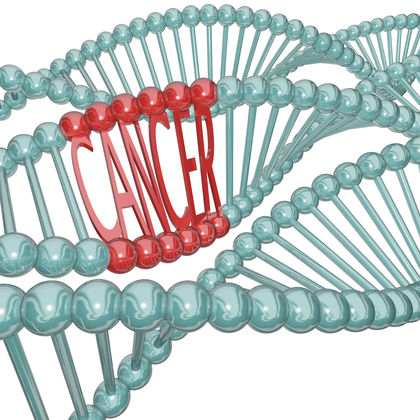Carcinogen

A carcinogen is a substance that causes a normal cell to change into a cancerous cell, resulting in uncontrolled cell growth. Cancer cells can multiply unchecked, forming a mass of tissue called a tumor. Sometimes cancerous cells "break off" from a tumor, traveling through the body and multiplying in other organs and tissues.
How carcinogens cause cancer
Carcinogens cause cancer by producing changes (or mutations) in the genetic material, or DNA, of a cell. These mutations result in uncontrolled cell division. A cancer-causing substance can alter the DNA of a cell directly or it can react with other chemicals in the body to form substances that cause gene mutations. (Genes are sections of DNA that serve as units of hereditary information.) A transformed cell may continue to function normally and not begin to multiply and develop into a tumor until many months or years later. It is not unusual for cancer to appear 20 to 25 years after initial exposure to a carcinogen.
Types of carcinogens
Carcinogens include both naturally occurring and artificially produced chemicals, ultraviolet light, and radioactive substances such as radon (a radioactive gas that is present in rock).
Words to Know
Aflatoxin: A carcinogenic poison produced by a mold that grows on peanuts and grains.
Cancer: A disease of uncontrolled cell growth.
DNA (deoxyribonucleic acid): The genetic material in the nucleus of cells that contains information for an organism's development.
Mutation: A change in the genetic material of a cell.
Radiation: Energy that is sent out as waves or particles.
Tumor: A mass of tissue formed by abnormal cell growth.
About 23 chemicals have been identified as carcinogens in humans, with many more shown to cause cancer in laboratory animals. Tobacco smoke contains several carcinogenic substances and is the major cause of lung cancer. Some drugs used in the treatment of cancer are themselves cancer-causing. In addition, various chemicals used in industrial processes, such as vinyl chloride and certain dyes, are known human carcinogens. Nitrites—chemicals added to processed meats such as bacon, sausage, and bologna to prevent spoilage—react with substances in the digestive tract to form carcinogenic chemicals called nitrosamines. Even synthetic dyes added to food for coloring are potential mutagens (substances that cause mutations in the genetic material of cells).
Sunlight is a well-known carcinogen that can cause changes in skin cells that may lead to skin cancer. Radiation emitted from an atomic bomb or released in nuclear power accidents can result in cancer in people exposed to it. Repeated exposure to radiation from medical X rays or other sources also may increase a person's risk of developing genetic mutations.
Some foods, such as celery, black pepper, white mushrooms, and mustard contain naturally occurring carcinogens. Aflatoxin is a cancer-causing chemical produced by molds on peanuts. However, these foods must be consumed in large quantities over a long period to initiate cancer.
Ames Test
The Ames test is a quick method of determining if a substance is capable of producing mutations. A culture of a strain of Salmonella bacteria that lacks an enzyme needed for growth is exposed to possible carcinogens. If the substance added to the culture is carcinogenic, it will cause mutations in the bacteria that allow the bacteria to grow. The Ames test has positively identified many carcinogens. It is used by cosmetic companies, drug manufacturers, and other industries that must prove that their products will not cause cancer in humans.
[ See also Cancer ; Cigarette smoke ; Mutation ; Nucleic acid ; Radiation exposure ; Virus ]